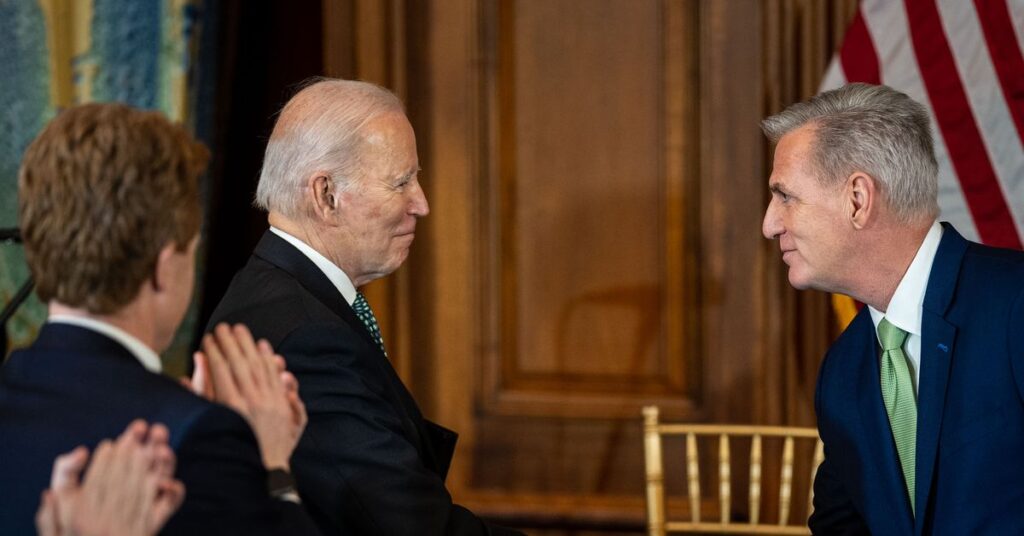With a potential default date just days away, lawmakers have managed to avert economic calamity by coming to a deal in principle to raise the debt ceiling and cap government spending for two years.
While the full details of the bill have not yet emerged, the reported elements of the deal included concessions from both parties, effectively ensuring that lawmakers won’t have to revisit the debt ceiling until after the 2024 presidential election.
Any deal will still have to pass both the Republican-controlled House of Representatives and will need to gain 60 votes in the Democratic-controlled Senate. Some conservative House Republicans have already objected to the bill. On Twitter Saturday night, Rep. Chip Roy (R-Texas) wrote, “I do not like the ‘deal’ as I understand it from the cheerleading so far… I will have more to follow once I see more details.”
In the end, President Joe Biden, though he long said he would not negotiate on government spending alongside the debt ceiling, wound up doing just that and, according to The New York Times, reportedly agreeing to both short-term discretionary spending caps and new limits and work requirements for social programs like food stamps and the Temporary Assistance for Needy Families (TANF) programs. House Republicans, meanwhile, relented on several demands to roll back Democratic policies including changes to Medicaid.
The announcement of a deal defuses longstanding fears about a potential default, which could have led to significant market volatility, spikes in interest rates, and an increase in unemployment. It indicates, too, that the debt ceiling remains a useful bargaining chip for the minority party, adding to years of brinksmanship on this issue, especially by Republicans.
The agreement also reportedly includes new rules around permitting and reviews for the construction of energy projects.
The debt ceiling has become a blunt political weapon
The standoff that led to this deal is only…
Read the full article here





